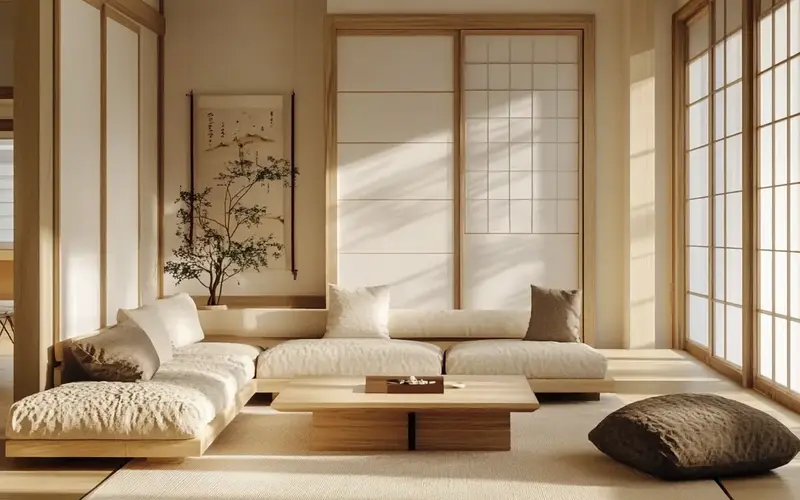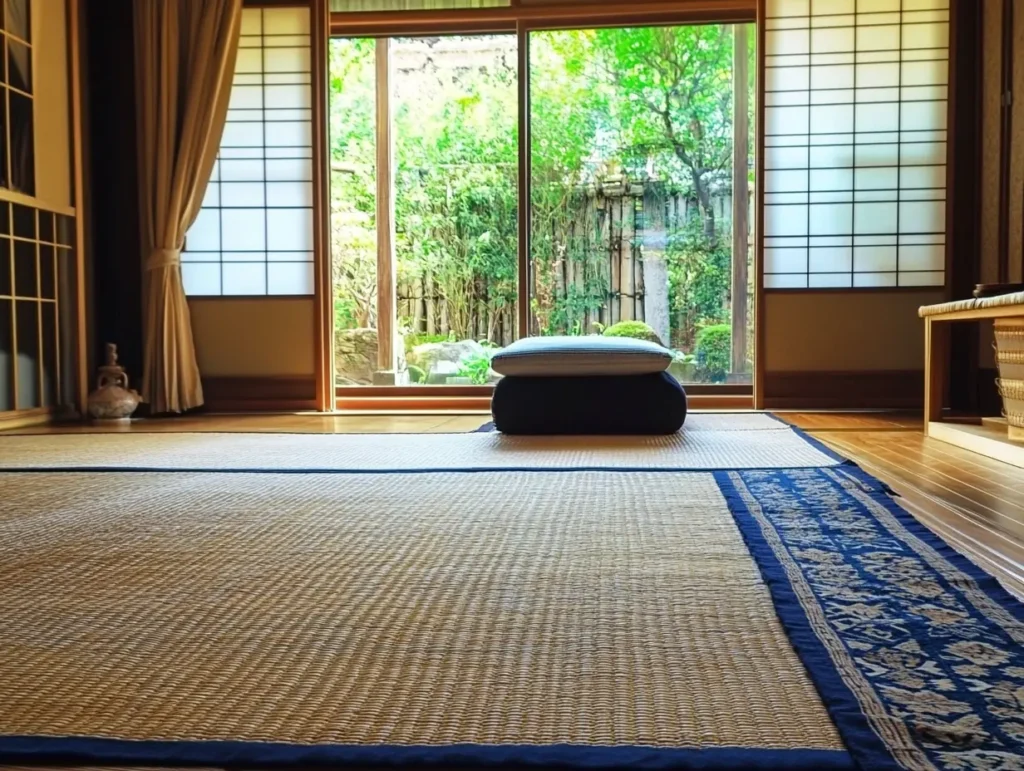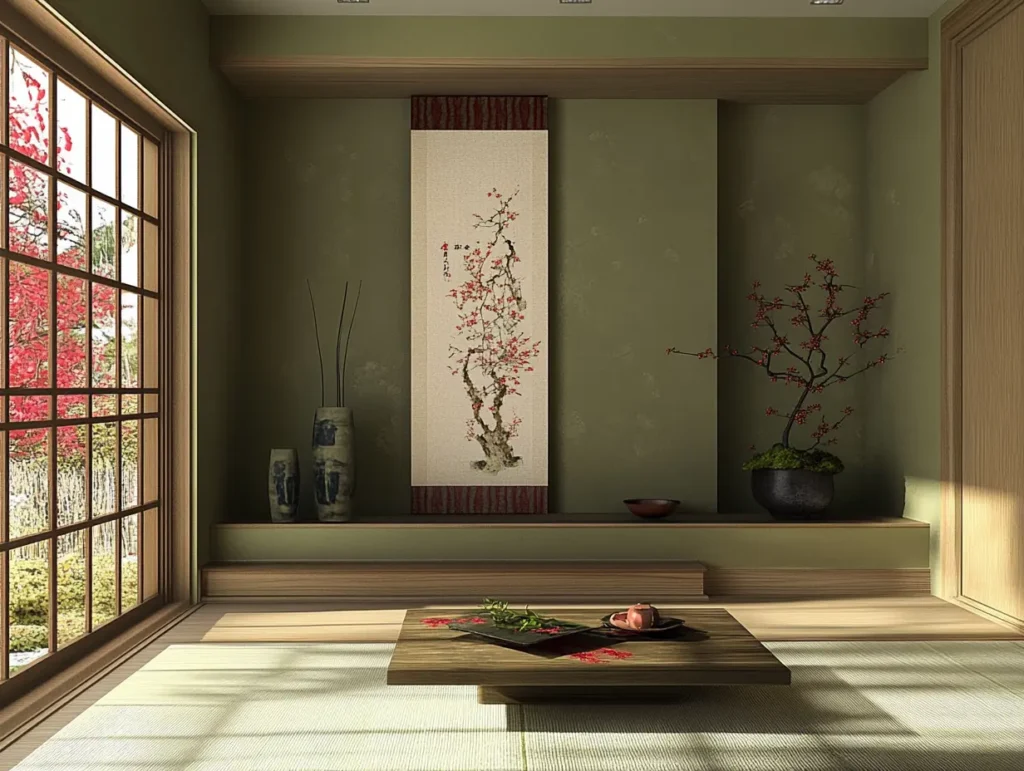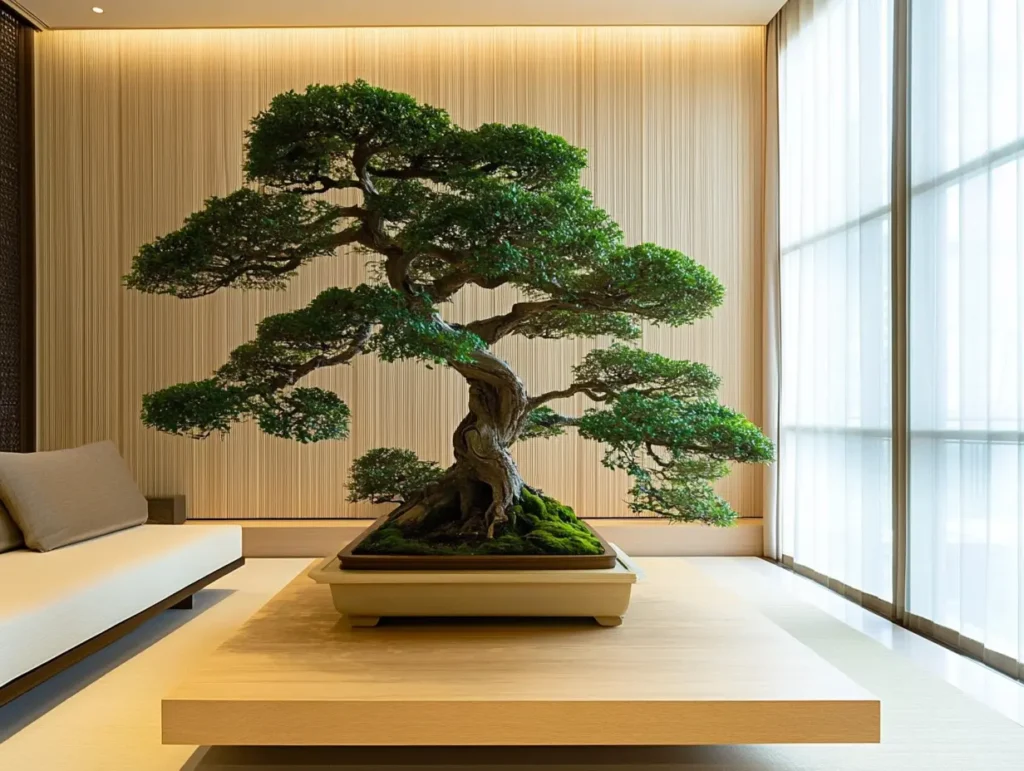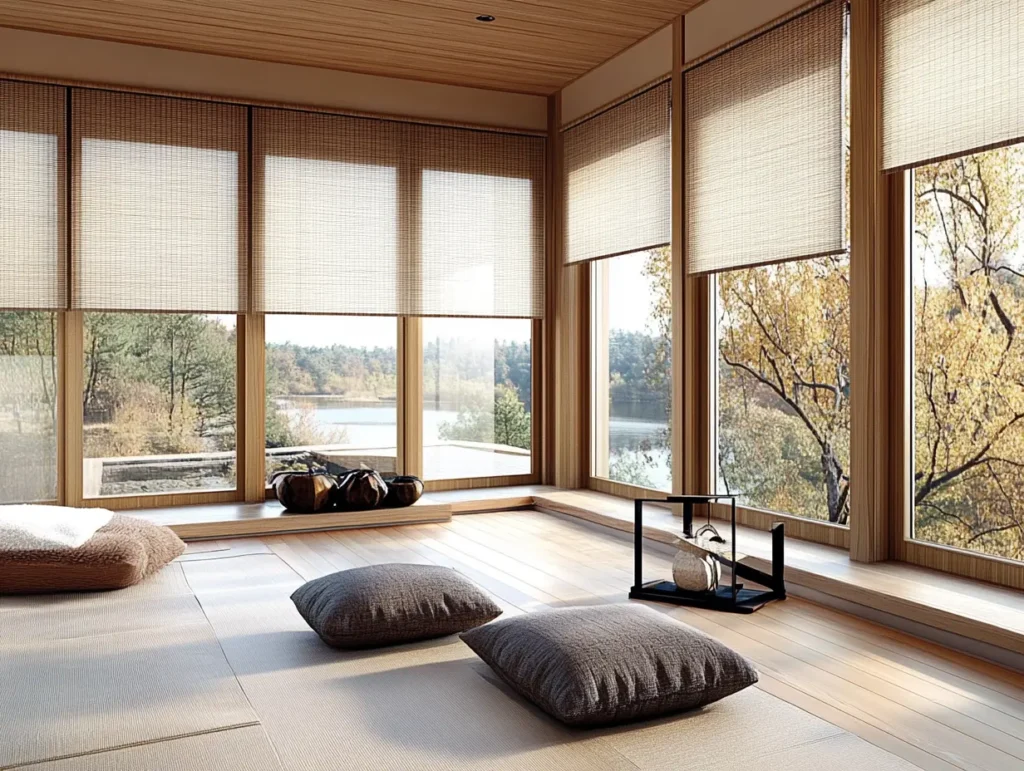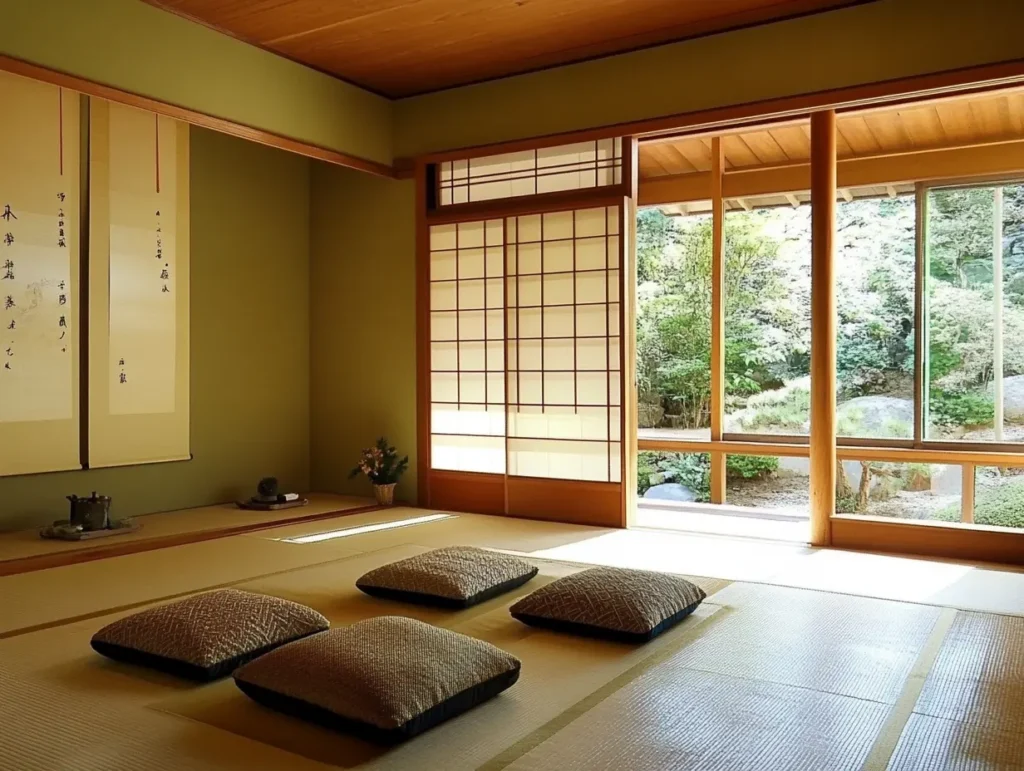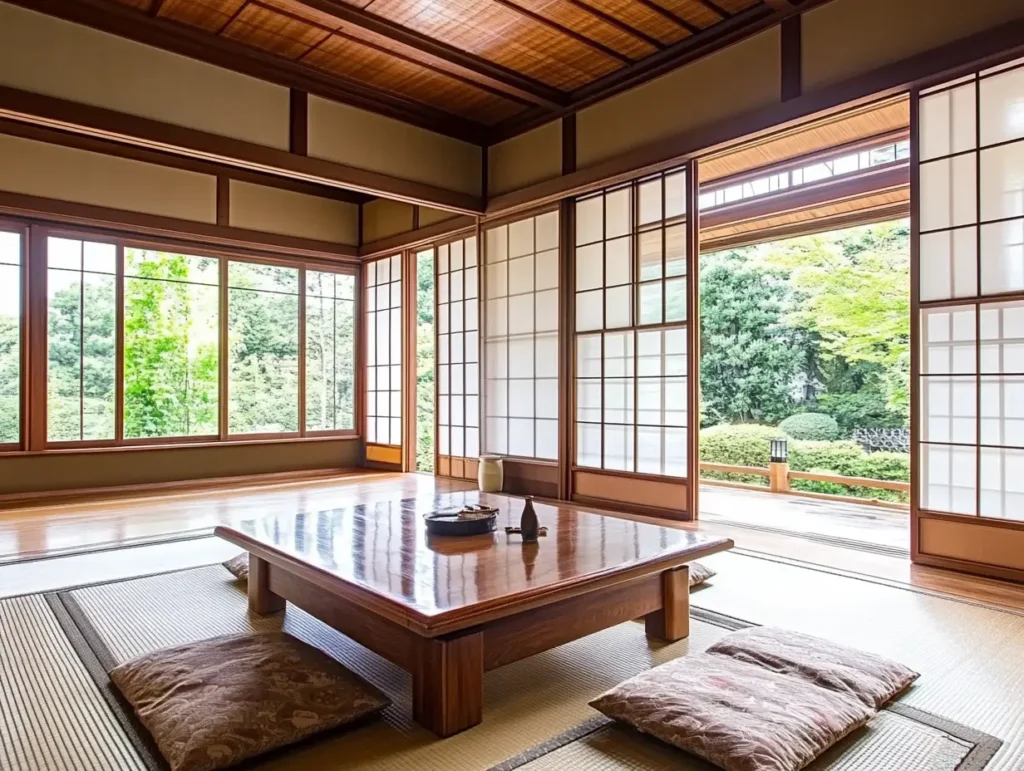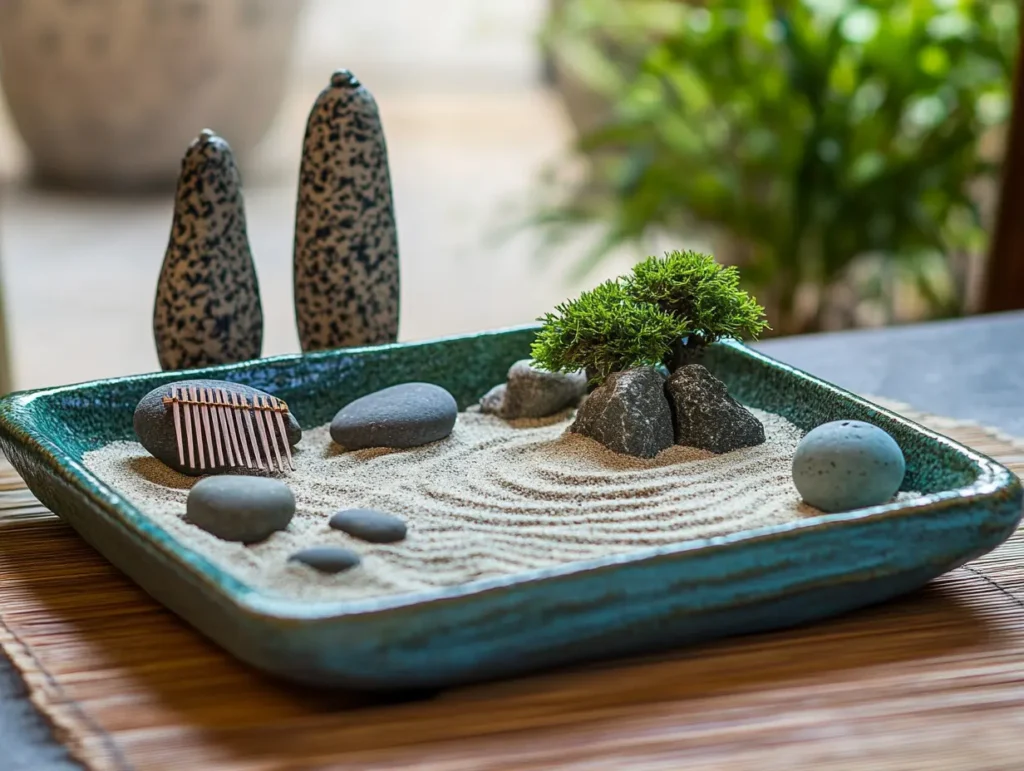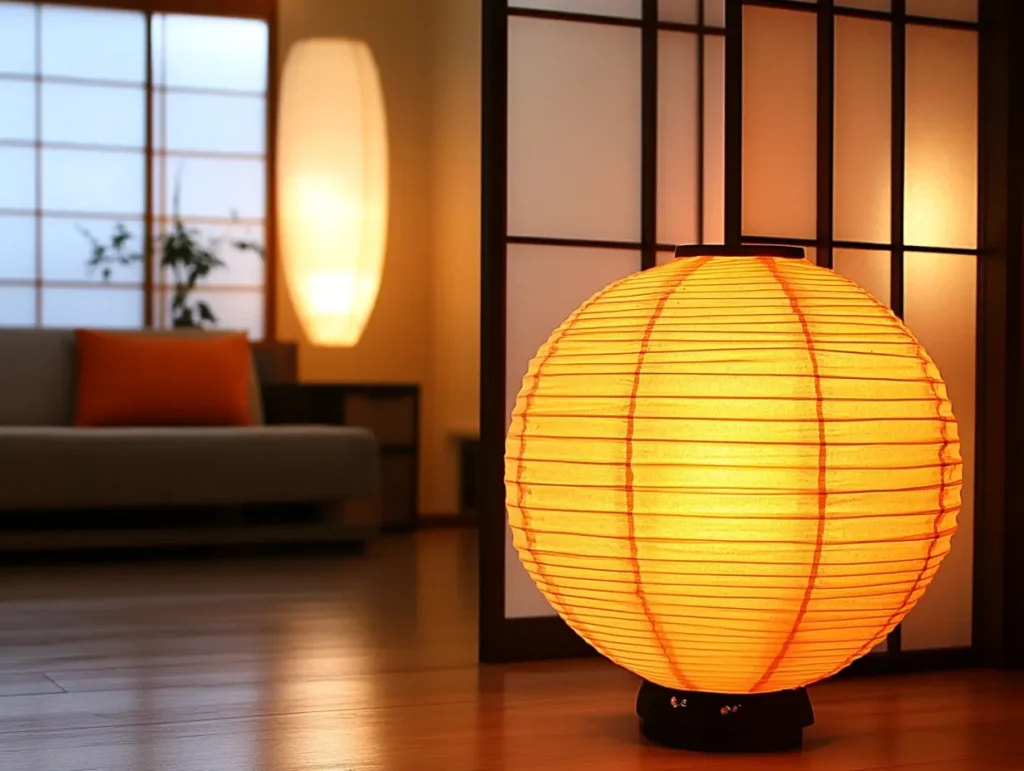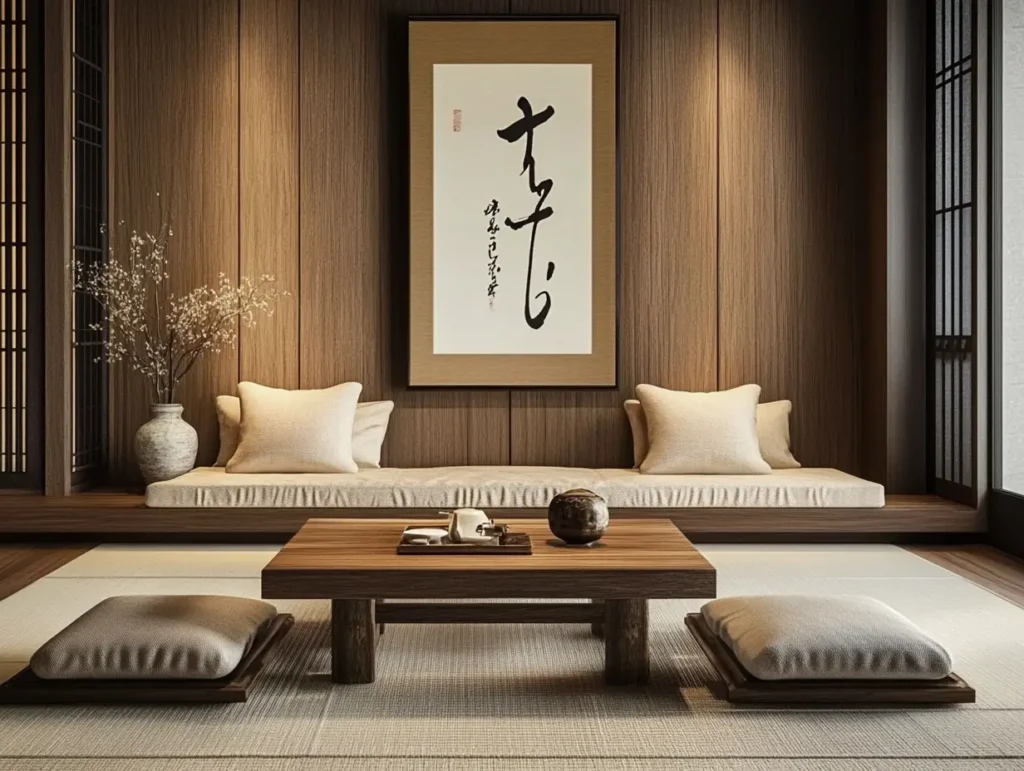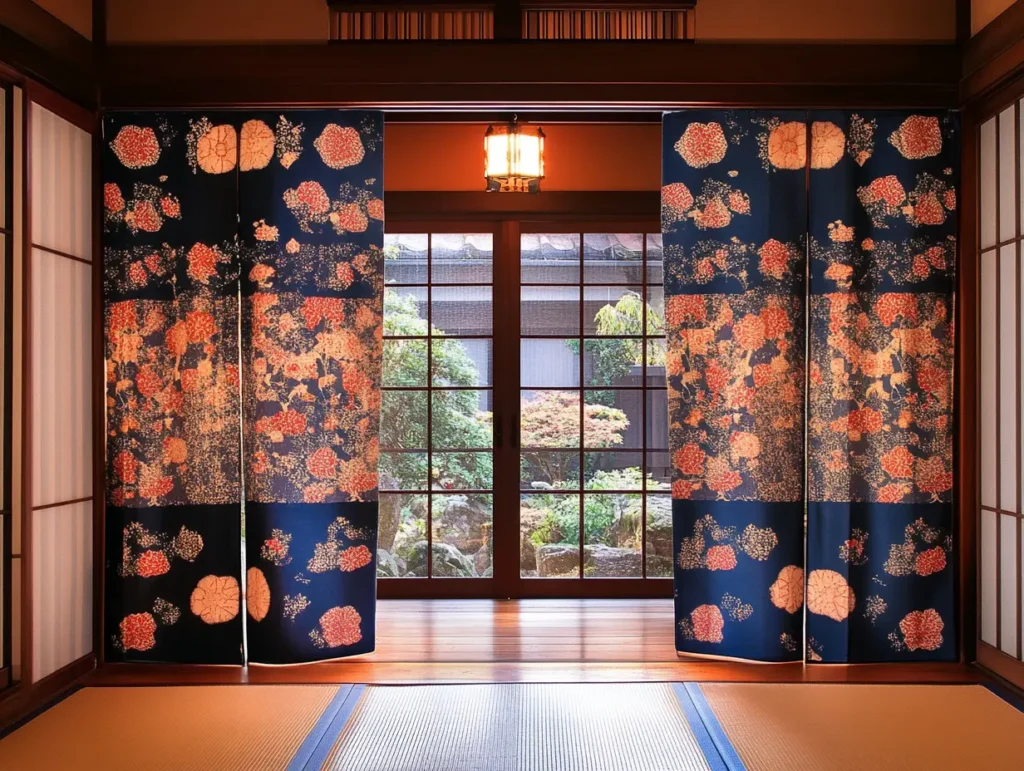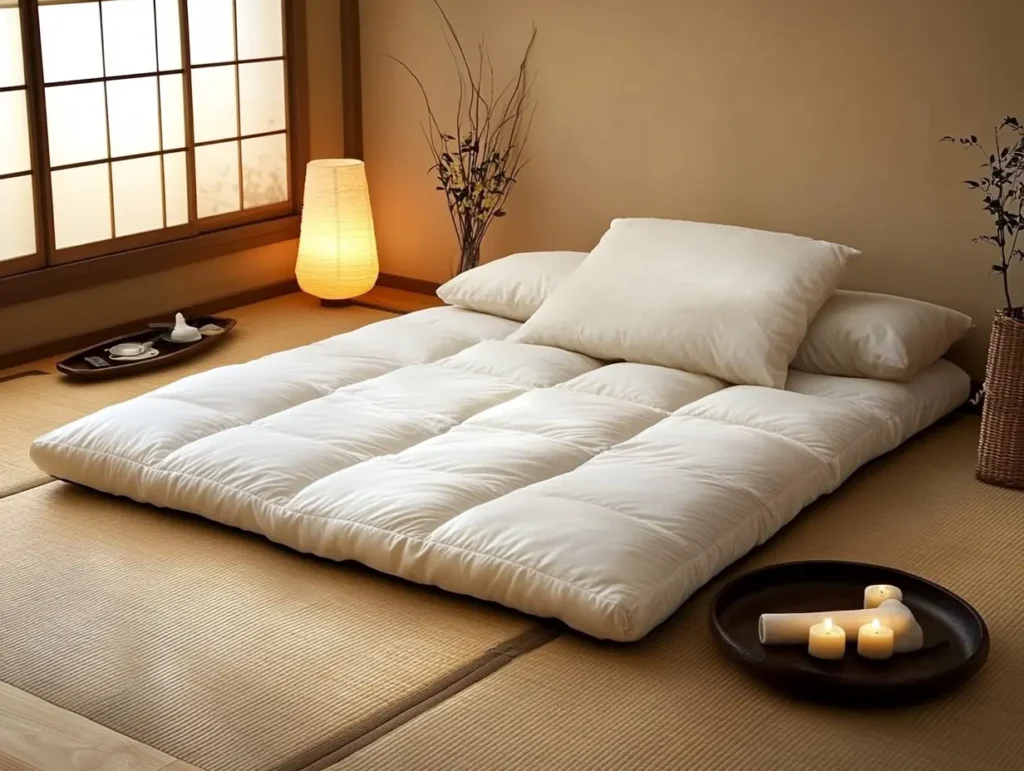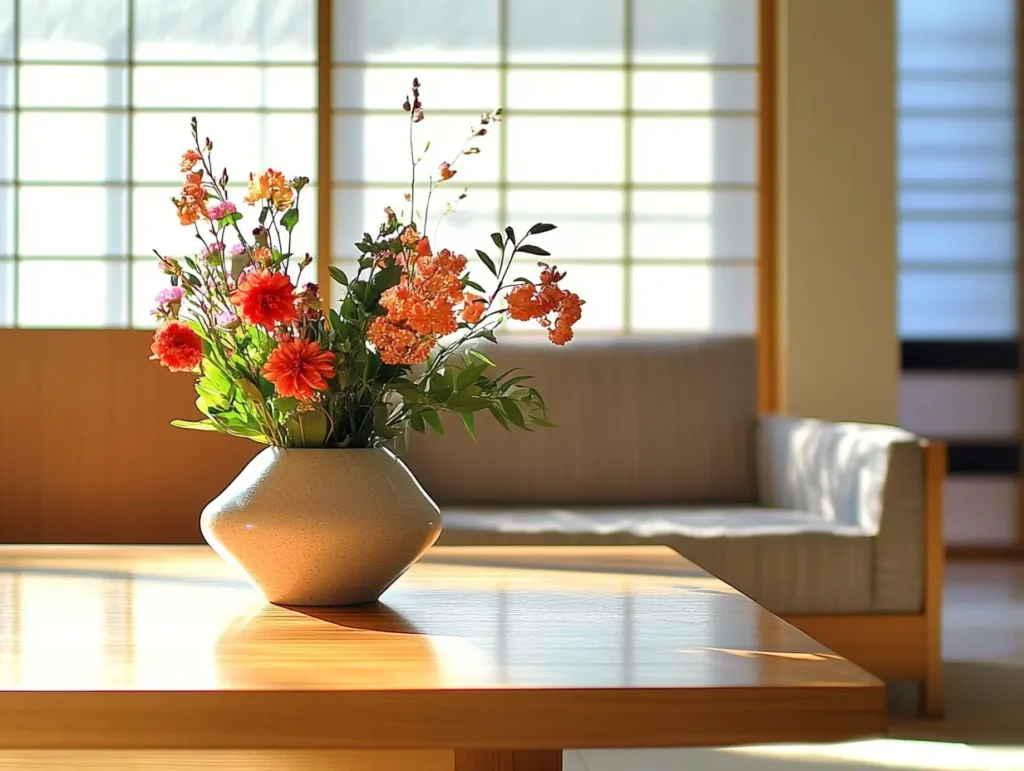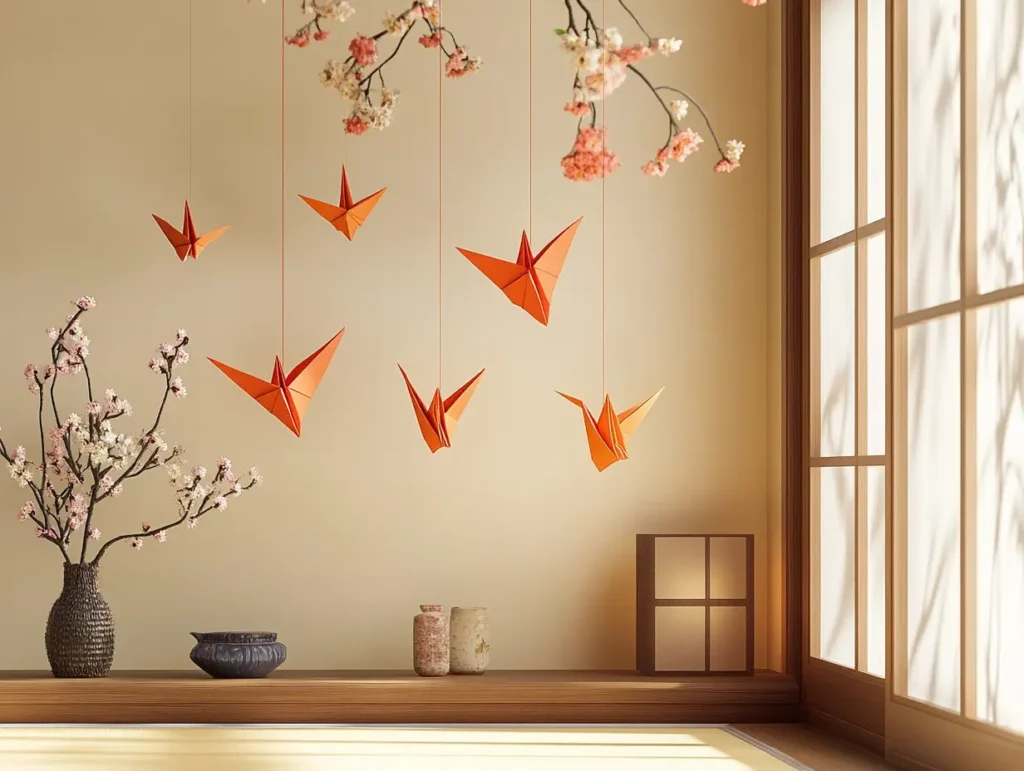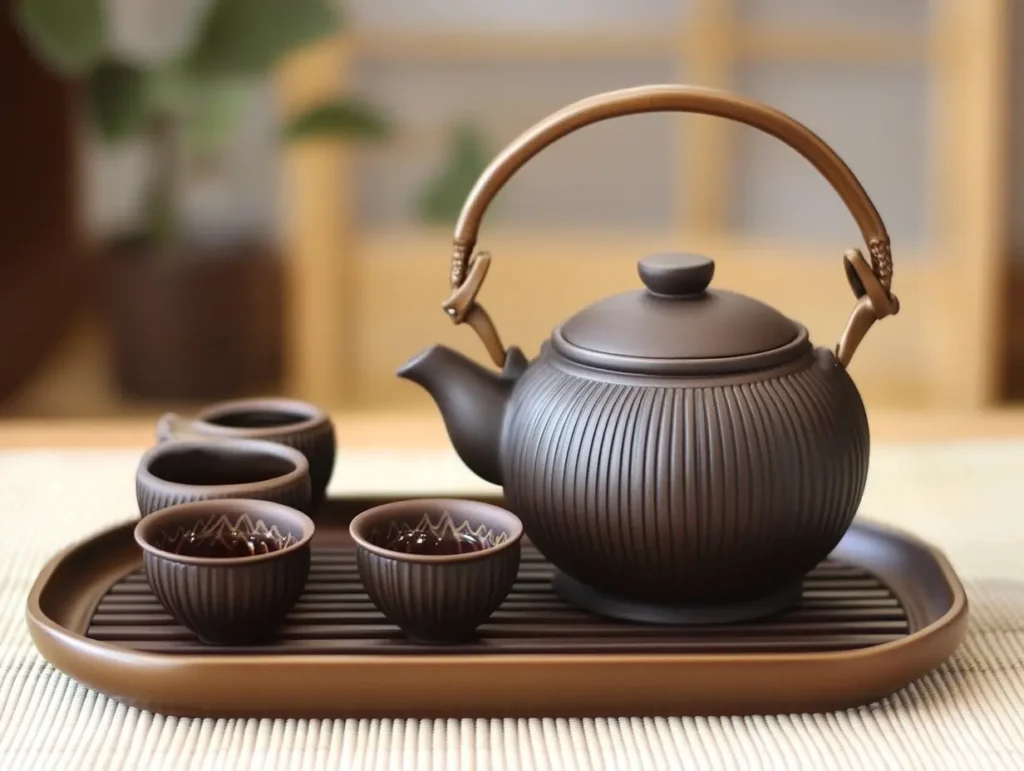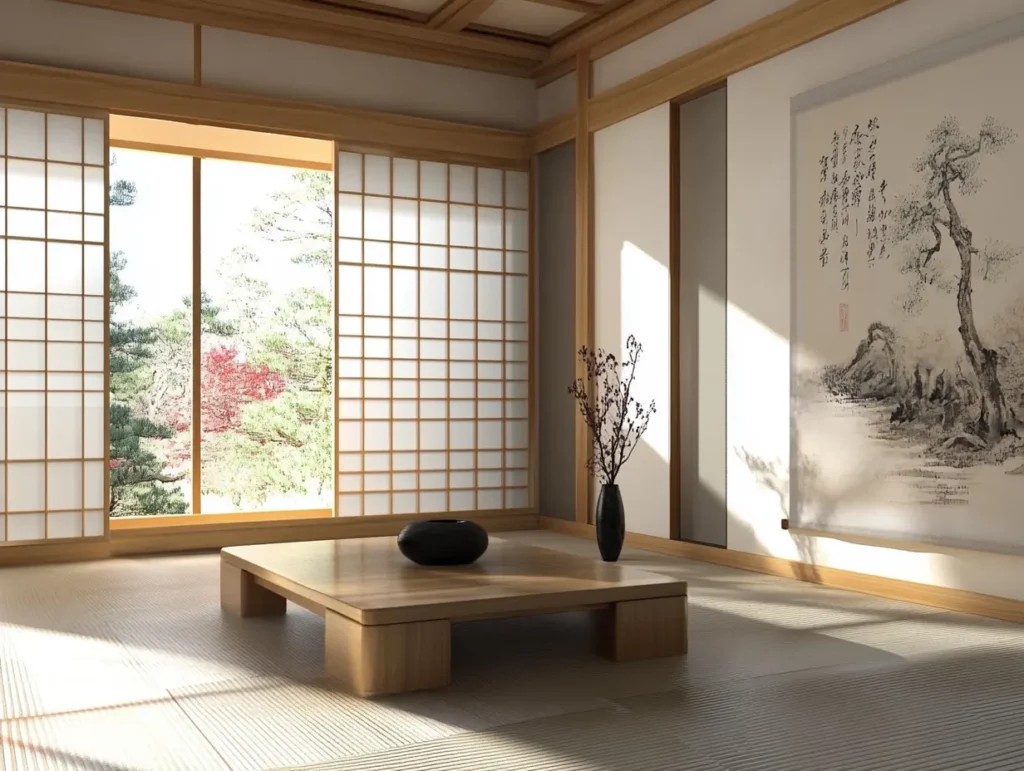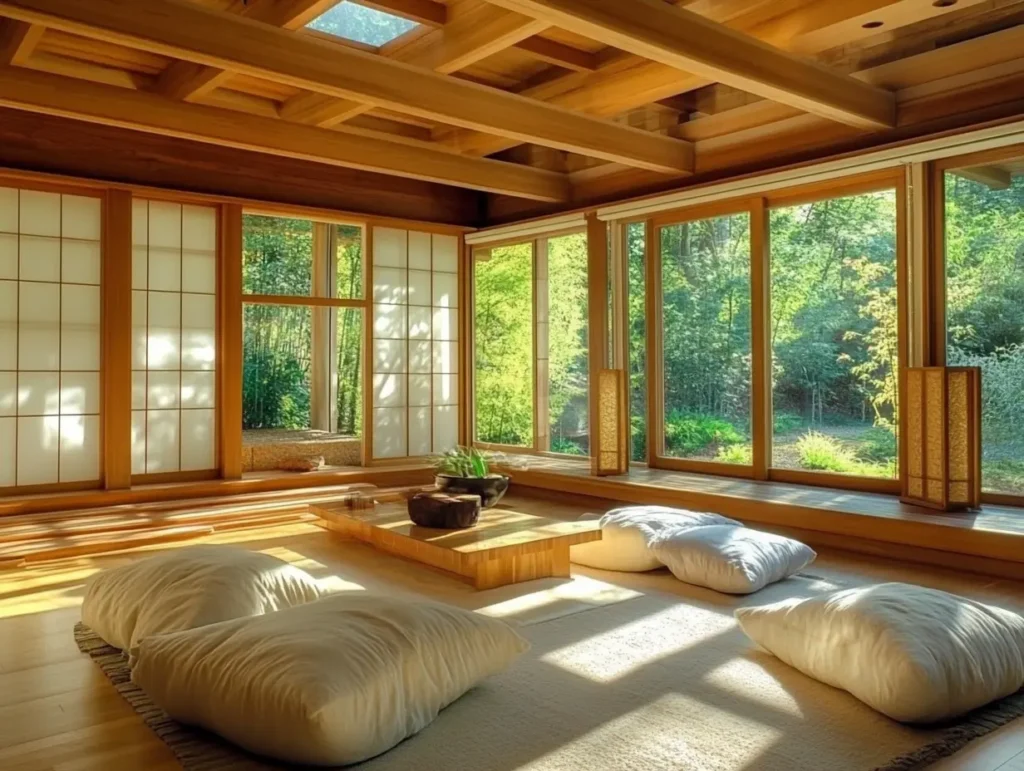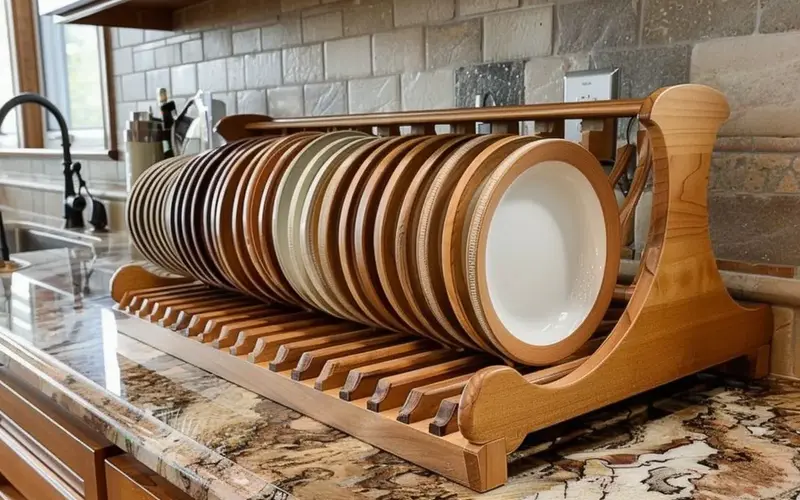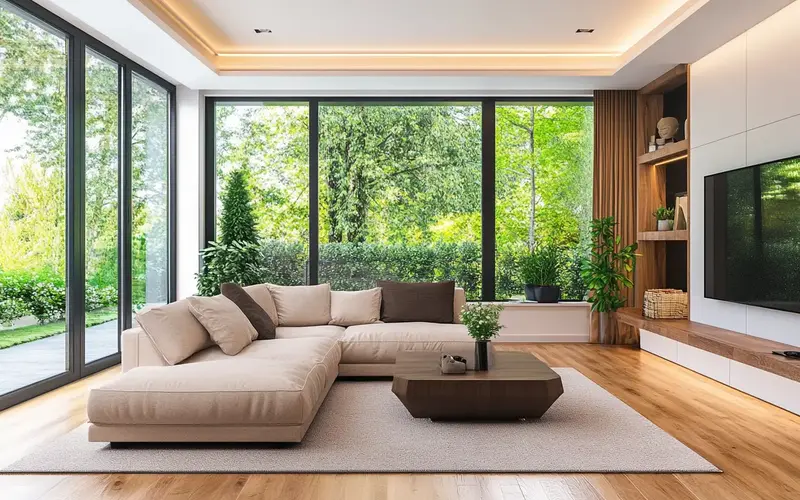Japanese aesthetics, often called wabi-sabi, celebrates the beauty of simplicity, naturalness, and even imperfection. It’s about appreciating the authenticity of materials, the passage of time, and the subtle elegance of understated design.
The best part is that Japanese design isn’t confined to traditional homes. Its clean lines and focus on functionality blend beautifully with modern interiors, making it a versatile choice for any living space. Ready to embark on a journey to transform your living room into a serene Japanese-inspired sanctuary? Let’s dive in!
1. Shoji Screens:
Shoji screens are synonymous with Japanese design. These lightweight, translucent screens, typically made with a wooden frame and rice paper, can be used as room dividers, window coverings, or decorative accents. They introduce a sense of airiness and mystery while gently allowing natural light to filter through.
You can even find modern interpretations with artistic patterns or frosted glass. To add a touch of Japanese elegance to your space, consider something like the 6-panel Room Divider, Privacy Screen, or Folding Shoji Screen.
Read More: 17 Living Room Decor Ideas for Plant Lovers
2. Tatami Mats:
The traditional flooring in Japanese homes is made of Tatami mats woven from rice straw. They offer a natural, slightly springy surface that’s comfortable underfoot and visually pleasing.
You can use them to cover the entire floor or define a specific area, such as a tea ceremony corner or a meditation space. The natural scent of tatami also adds a subtle, earthy aroma to the room. For an authentic feel, opt for high-quality mats like the Japanese Traditional Igusa Tatami Mat.
Read More: 17 Stunning Fireplace Wall Ideas with a TV for your Living Room
3. Tokonoma Alcove:
A tokonoma is a recessed alcove traditionally found in Japanese homes. It is used to display prized possessions or seasonal decorations. It is a focal point, drawing attention to a single object or arrangement.
To create your tokonoma, dedicate a small wall space and adorn it with a simple scroll painting, a bonsai tree, or a carefully arranged Ikebana flower arrangement. Remember, less is more – let the object’s beauty shine through.
Read More: 17 Totally Awesome 1930s Living Room Decor Ideas
4. Bonsai Trees:
Bonsai, the art of cultivating miniature trees, epitomizes the Japanese appreciation for nature and patience. These living sculptures, meticulously shaped and pruned over years, bring a touch of the outdoors inside.
Place a bonsai on a coffee table, shelf, or dedicated stand to add a serene and captivating focal point to your living room. To get you started, you can find beautiful starter bonsai trees like the Miniature Live Bonsai Tree for Beginners.
Read More: 17 Chic Picture Wall Ideas for a Modern Living Room
5. Natural Materials:
Japanese design embraces the warmth and authenticity of natural materials. Wood, bamboo, stone, and paper are all key elements that create a sense of grounding and connection to nature.
Look for furniture made from these materials, consider bamboo blinds or a stone accent wall, or simply incorporate natural textures through woven baskets or linen cushions. The goal is to create an organic and inviting atmosphere.
Read More: 21 Amazing Black and Beige Living Room Ideas
6. Neutral Color Palette:
Japanese interiors typically favor a neutral color scheme with earthy tones like white, beige, brown, and green. This creates a calming backdrop that allows the beauty of natural materials and textures to take center stage.
You can add subtle pops of color through accent pillows, artwork, or a single vibrant flower arrangement. Think of it as creating a canvas for the natural world to shine.
Read More: 17 Totally Awesome 70s Living Room Decor Ideas
7. Minimalist Furniture:
Embrace the Japanese concept of ma, which refers to the beauty of empty space. Opt for furniture with clean lines and simple designs, avoiding clutter and excess.
Low-lying furniture like a chabudai (short-legged table) or floor cushions further enhances the sense of openness and encourages a relaxed, informal atmosphere. Like the Japanese Style Floor Table, you can find stylish and functional minimalist furniture on Amazon.
Read More: 17 Kid-Friendly Living Room Decor Ideas
8. Zen Garden:
A miniature Zen garden, or karesansui, is a dry landscape created with sand, rocks, and sometimes moss. It’s a visual representation of nature, inviting contemplation and mindfulness.
Create your own Zen garden in a shallow dish or tray, using a small rake to create patterns in the sand. This beautiful and interactive piece adds a touch of Zen to any living room. You can get started with a kit like the Mini Zen Garden.
Read More: 17 Quirky Living Room Decor Ideas for the Unconventional Home
9. Japanese Lanterns:
Japanese lanterns, traditionally made from paper or bamboo, cast a soft, warm glow that instantly creates a cozy and intimate atmosphere. Hang them from the ceiling, place them on side tables, or use them as floor lamps.
The gentle light filtering through the paper creates beautiful patterns and shadows, adding a touch of magic to your space. For an authentic look, check out the Japanese Paper Lantern Lamp.
Read More: 17 Organic Modern Living Room Ideas with a Touch of Luxury
10. Calligraphy Art:
Japanese calligraphy, known as shodo, is a revered art form that combines writing with visual expression. A single brushstroke can convey a world of meaning and emotion. Frame a beautiful calligraphy piece, hang it on your wall, or display it on a shelf.
The elegant lines and intricate characters add a touch of sophistication and cultural depth to your living room. You can find a variety of calligraphy prints on Amazon, like the Japanese Calligraphy Wall Art.
Read More: 17 Western Gothic Living Room Ideas
11. Noren Curtains:
Noren are short fabric panels traditionally hung in doorways or used as room dividers. They add a touch of Japanese charm and come in various colors and patterns.
Hang a noren in a doorway to create a soft separation between spaces or conceal a storage area. They’re functional and decorative, bringing a unique Japanese element to your living room. Consider a colorful option like the Japanese Noren Doorway Curtain.
Read More: 17 Navy Blue Living Room Decor Ideas That Make a Statement
12. Futon Beds:
Futons, traditional Japanese bedding consisting of a thick mattress and quilt, are a versatile and space-saving option, especially for smaller living rooms. They can be easily rolled up and stored away during the day, freeing up valuable floor space.
Simply unroll them on the floor at night for a comfortable and restful sleep. For the best experience, look for high-quality futons like the Japanese Traditional Shiki Futon.
Read More: 17 Retro Living Room Decor Ideas to Turn Back Time
13. Ikebana Flower Arrangements:
Ikebana is the Japanese art of flower arranging. It emphasizes simplicity, harmony, and balance. Unlike Western floral arrangements, Ikebana focuses on the lines, forms, and negative space created by the arrangement.
You can create your own Ikebana display or purchase a professionally arranged piece to add a touch of elegance and natural beauty to your living room.
Read More: 17 Chic Accent Chair Living Room Ideas
14. Origami Decorations:
Origami, the art of paper folding, creates intricate and beautiful designs from a single sheet of paper. Cranes, flowers, and other origami creations can be displayed on shelves, tables, or even hung from the ceiling.
They add a playful and whimsical touch to your space while showcasing the Japanese appreciation for craftsmanship and precision.
Read More: 17 Vintage Living Room Decor Ideas: Nostalgic Charm
15. Japanese Tea Set:
A traditional Japanese tea set, often made from ceramic or cast iron, is both functional and a beautiful decorative piece. You can display it on a tray or shelf or use it for a relaxing tea ceremony with friends and family.
The ritual of preparing and serving tea promotes mindfulness and connection, bringing a sense of tranquility to your living room. For a complete set, consider the Japanese Tea Set.
Read More: 17 Pink Living Room Decor Ideas for a Calming Atmosphere
16. Sliding Doors:
Fusuma, or sliding doors, are another iconic element of Japanese architecture. They’re often used to divide rooms or create privacy while maintaining a sense of openness.
Incorporate fusuma into your living room design. They can be adorned with traditional paintings or calligraphy, adding another layer of Japanese aesthetics to your space.
17. Natural Light:
Natural light is essential in Japanese design, creating a sense of openness and connection to the outdoors. Use sheer curtains or blinds instead of heavy drapes to maximize natural light in your living room.
Consider adding a skylight or strategically placing mirrors to reflect light into darker corners. The abundance of natural light will enhance your Japanese-inspired space’s overall serenity and harmony.
Final Thoughts
Incorporating Japanese aesthetics into your living room is more than adding a few decorative elements. It’s about embracing a philosophy that values simplicity, naturalness, and imperfection.
Using natural materials, a neutral color palette, and minimalist furniture, you can create a space that promotes tranquility, mindfulness, and deep appreciation. So, go ahead and experiment with these ideas, personalize them to your taste, and create a Japanese-inspired living room that truly reflects your inner peace and connection to the natural world.
